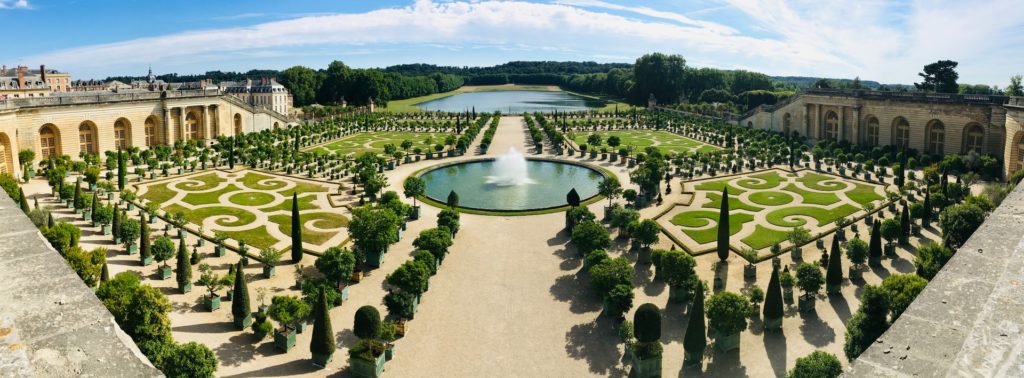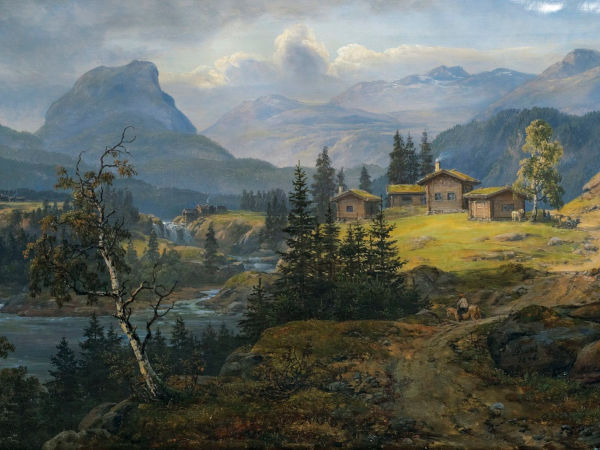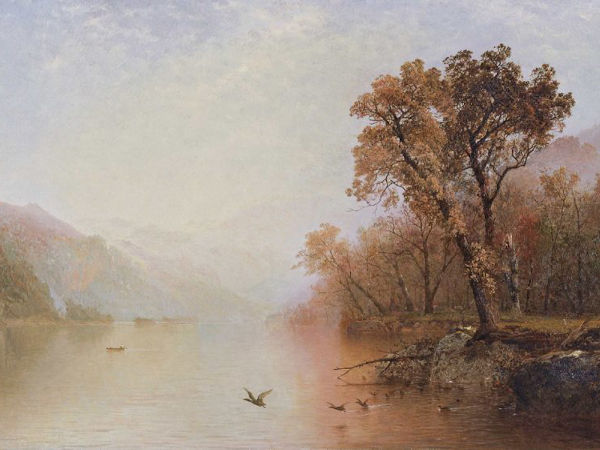Landscape Architecture as Profession; Landscape Architect as Archetype
A co-creator of place for human dwelling…A steward of land and culture…A transdisciplinary professional…A compassionate individual who sees their work as personal growth and social responsibility…A person who is wise enough to know their place in the world but also humble enough to know that they are always in a state of “becoming”…This is a description of an ideal landscape architect and the aspiration of any human being engaging in our present-day world. For this reason, the “landscape architect” can be considered a modern archetype for someone who navigates the complexities of the social and ecological world through a relationship with landscapes.
This is an excerpt, with minor edits, from Chapter 1 of my PhD Dissertation “Nature, Self, and Being in the World.”
Landscape architecture’s lost philosophy
Architecture and landscape architecture are professions that tackle human dwelling in the physical plane. Since human dwelling is an existential matter, architecture and landscape architecture are meant to engage with deep philosophical questions about human existence. But unlike architecture, which has theoretical foundations that tie to ancient philosophies and anthropology, landscape architecture as a “profession” has barely touched upon its philosophical roots.
Landscape architecture theory is generally specific to the era in which the theories were formed. For example, the classics of landscape architecture such as Ian McHarg’s (1969) Design with Nature and Jane Jacob’s (1961) The Death and Life of Great American Cities arise from the environmental crisis of 20th century modernity.
Critical landscape theory, another area of research that examines human being’s relationship with landscapes, also stems from socio-political concerns found relevant in 20th century post-colonial studies.
Otherwise, based on my own review of the most popular landscape architecture texts available, the topics of discourse within landscape architecture are quite scattered: for example, surveys of the history of the profession, contemporary meanings in landscape design, or re-envisioning concepts from relevant professions such as architecture, geography, environmental science, or horticulture.
In stark contrast, architecture theory in the Western world goes back to 1st century BC Roman architect Vitruvius. Moreover, “Starchitects” like Brunelleschi (1377-1446), Alberti (1402-1472), and Michelangelo (1475-1564) were already found flourishing during the Renaissance. However, I’d note that Michelangelo was more than an architect. Like other “Renaissance men,” he was considered a genius in the arts and the sciences. So architecture was just another piece of his “genius pie.”

While the profession of architecture continued to build upon its historical prominence as a built artform, landscape architecture’s professional identity hesitated to celebrate its ancestral roots in the art of gardening. Landscape architects’ anecdotal hostility to being mislabelled as garden designers show hints of this dissonance.1 Even Frederick Law Olmsted, the “father of landscape architecture,” was reluctant to call his work “landscape gardening,” noting that the engineering work involved in his designs go well beyond the work of garden designing (Olmsted 2015).
Ironically, the imperial gardeners of China and France did just as much engineering and yet they were celebrated as master gardeners.2 Moreover, formal texts on garden-making, in the form of agricultural gardening and meditative gardening, go back at least to the 10th century Byzantine Geoponica and the 11th century Japanese Sakuteiki (Kanzaki and Wise 2013).
From examples such as the Hanging Gardens of Babylon and the Great Pyramids, remarkable gardens and architectural structures have been created since the rise of human civilisation. However, gardening and architecture, which both have sacred ties to anthropological human history, are not given equal celebrity status in the making of the modern professional identity.

Nature, landscape, and philosophy
I suspect that the difference between the way architecture and landscape architecture relates to philosophy is not about architecture purposely seeking an ontological philosophy for itself, but rather because Western thinkers found architecture easier to associate with an existential identity because architecture, unlike gardening and landscape architecture, is not a discipline tied to nature in everyday discourse.
An existential identity tied to nature is too disruptive for a mindset that wants humans to be superior over the rest of the world. Although landscape is not synonymous with nature, a discourse on landscape also means a discourse on nature.
So no matter how nature is culturally or historically constructed, it always carries with it an existential question about a human-world relationship, even if the relationship is an inconsistent and paradoxical modern one. For instance, a nature that is simultaneously a peripheral bystander to busy city life, the herald of environmental catastrophes, and a therapeutic comforter for our mental and emotional woes.
In most cultures, nature’s essence is sacred. Therefore, landscape as a “processing” of nature in human perception (for whatever ideal nature takes on as a society), also has an element of sacredness.
Although the concept of landscape has varied in relevance throughout Western thought, arguably most celebrated as a subject matter in the arts from the 17th to the 19th centuries, the fascination for an enigmatic kind of landscape was mostly abandoned in the 20th century for objectified nature and space. Edward Relph (1981) describes this dismissal as landscape being “quietly slipped into a straightjacket” (109).
Within the praxis of landscape architecture is then the same tension as one of binary modern thought: an animated sacred world versus a rational problem-based world; in other words, a worldview that landscape is sacred and existential in meaning and a landscape architecture that is about impartial problem solving in the physical world. Criticisms in the design professions hint at an underlying issue: the neglect for experiential awareness.
Experience is more than mechanical
Our relationship with landscapes is found in personal experiences. The act of living, or dwelling in the world, is essentially the process of having poignant and not-so-poignant moments unfold through experiences.
However, according to architect Botond Bognar (1985), design education and practice have been overly concerned with objective processes and rational solutions, and therefore, have been neglecting human experiences:
Designing is approached analytically, programmatically and scientifically—that is, primarily along rational principles and theories. Students are provided with a list of objective, well-defined goals and methods to achieve such ends as utility efficiency, economy, structural stability and formal appearance. The problems faced in reaching such ends are regarded as definable, analyzable, measurable, predictable, and solvable. (185)
I agree with his statement that this is the mindset that design professions, including landscape architecture, generally operate from. However, the problem does not lie in the seeking of rational solutions, but that human experience, either individually or collectively, is not only rational. Life is not all “definable, analyzable, measurable, predictable, and solvable.” If it were, all problems in the world would have already been fixed by now.
Similarly, James Corner (2002) had stated that “contemporary theory and practice have all but lost their metaphysical and mythopoetic dimensions, promoting a landscape architecture of primary prosaic and technical construction” (20). I think that the degree of prosaic-ness or straightjacket-ness to landscape architecture is debatable, but the Cartesian worldview in which most of the world has predominantly operated from since the 17th century, with some exceptions during the Romantic era, certainly promotes an overarching level of binary thinking.
Poignant landscapes move us into a realm beyond rational and binary explanations because neither poignancy nor landscapes can be easily defined by two-opposing perspectives.
Like Corner, I longed for a mythopoetic version of landscape architecture. But upon reflection, I was likely longing for something much deeper. I was longing for a mythopoetic version of our current world that can be symbolised through an archetypal version of landscape architecture.
Landscape architect as a collective archetype
In Carl Jung’s (1970) theory of analytical psychology, the human psyche is comprised of the personal consciousness, the personal unconscious, and the inherited collective unconscious. So, while we live consciously as individuals, at a subconscious level, we are part of a greater collective essence.
Ecopsychology extends our psychological interconnectedness further to include the rest of nature. Accordingly, human beings are part of a bigger shared world psyche (Hillman 1992). So, although my personal motive for my research on poignant landscapes had been to disentangle one of the mysteries pertaining to my own life, I also live within a world of social and ecological systems that are linked together in conscious and unconscious ways. Therefore, my inquiry into this mystery was more than personal.
At a core level, my mystery was also everyone else’s mystery. My journey to uncover an obscure “truth” of the world through poignant landscapes was also a gateway to the collective psyche’s “truth” of the world. However, just as I could not live someone else’s experience, I could not presume someone else’s relationship with poignant landscapes. What I could do was search for human connectedness within our personal relationships with landscapes.
From a pragmatic perspective, landscape architecture can be considered a special case study of humanity’s relationship with the world. But from a Jungian perspective of the collective unconscious, I consider the “landscape architect” as a kind of modern archetype, one who navigates the complexities of the social and ecological world through a relationship with landscapes.
The ideal landscape architect (i.e., the archetype) is a co-creator of places for human dwelling, a steward of land and culture, a transdisciplinary professional, a compassionate individual who sees their work as personal growth and social responsibility, and a person who is wise enough to know their place in the world but also humble enough to know that they are always in a state of “becoming.”
None of these characteristics are unfamiliar to landscape architecture discourse, but as an integrated whole, the ideal landscape architect can only be found as an archetype. Because the unconscious holds the parts of ourselves that our conscious psyche denies or represses (i.e., our shadows), landscape architects, as parts of our collective society, have inevitably also inherited the shadows of our collective unconscious.
However, as an archetype, anyone can embody these qualities, because what I have described are aspirations for any human being engaging in our present-day world.

- Perhaps, the most celebrated figure in contemporary landscape architecture for gardening is Piet Oudolf. But even so, he started as a plant nursery owner and is usually credited as a landscape or garden designer. ↩︎
- Contemporary landscape architecture often credit these imperial master gardeners as “landscape architects” which is ironic since there is usually an unsaid distinction for landscape architects between their work as professionals and their potential hobby as gardeners. ↩︎
References:
- Bognar, Botond. 1985. ‘A Phenomenological Approach to Architecture and Its Teaching in the Design Studio’. In Dwelling, Place, and Environment: Towards a Phenomenology of Person and World, edited by David Seamon and Robert Mugerauer, 183–97. Dordrecht, Netherlands: M. Nijhoff.
- Corner, James. 2002. ‘Theory in Crisis’. In Theory in Landscape Architecture: A Reader, edited by Simon Swaffield, 20–21. Philadelphia: University of Pennsylvania Press.
- Hillman, James. 1992. ‘Anima Mundi: The Return of the Soul of the World’. In The Thought of the Heart and the Soul of the World. Dallas: Spring Publications.
- Jung, Carl. 1970.The Collected Works of C. G. Jung: The Symbolic Life: Miscellaneous Writings. Edited by R. Herbert, M. Fordham, G. Adler, and W. McGuire. Translated by R. F. C. Hull. Complete Digital Edition. Vol. 18. Bollingen Series XX. New York: Princeton University Press.
- Kanzaki, Mai, and Jennifer Wise. 2013. ‘The Japanese-Garden Aesthetics of Robert Lepage: Shukukei, Mitate, and Fusuma-e in Seven Streams of the River and Other Works’. Theatre Research International 38 (3): 196–213.
- Olmsted, Frederick Law. 2015. Writings on Landscape, Culture, and Society. Edited by Charles E. Beveridge. 270. New York: The Library of America
- Relph, Edward. 1981. Rational Landscapes and Humanistic Geography. London: Croom Helm.





